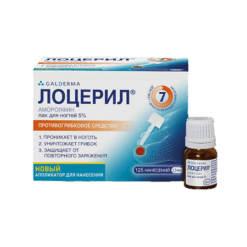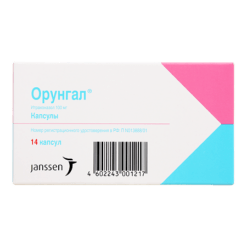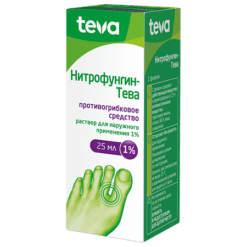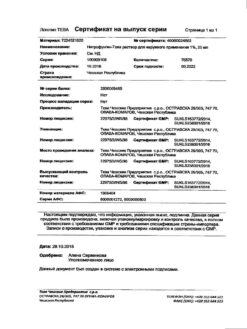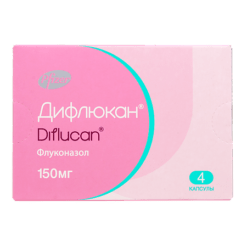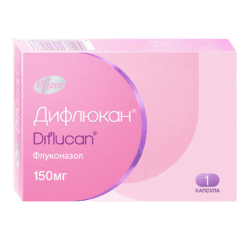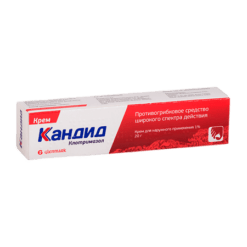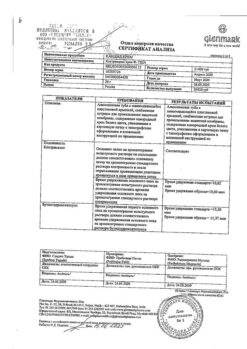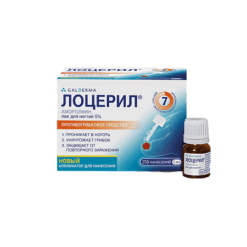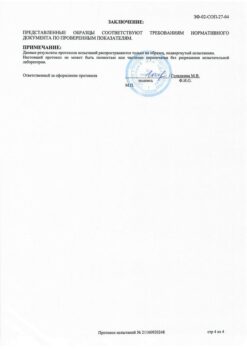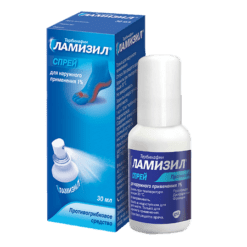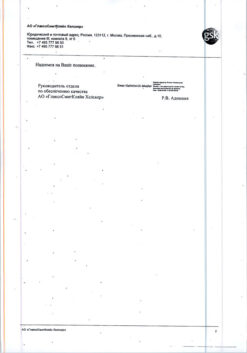No products in the cart.
Eraxis, lyophilizate 100 mg
€1.00
Out of stock
(E-mail when Stock is available)
Description
Eraxis is an antifungal agent, a semi-synthetic echinocandin, a lipopeptide synthesized by fermentation of Aspergillus nidulans products. Anidulafungin selectively inhibits 1,3-β-D glucan synthase, an important fungal cell enzyme that is absent in mammalian cells. This leads to disruption of the formation of 1,3-β-D-glucan, the main component of the fungal cell wall. Anidulafungin has fungicidal activity against various fungi of the genus Сandida and activity in the areas of active cell growth of hyphae of the fungus Aspergillus fumigatus.
Anidulafungin is active in vitro against Candida albicans, Candida glabrata, Candida parapsilosis, Candida tropicalis.
In in vivo studies with parenteral administration, anidulafungin showed efficacy against Candida spp. fungi, as shown in models of immunocompetent and immunocompromised mice and rabbits. Anidulafungin increased survival in animals and also reduced organ burden with Candida spp. fungi when determined between 24 and 96 hours after the last administration.
Indications
Indications
Invasive candidiasis, including candidemia; esophageal candidiasis.
Pharmacological effect
Pharmacological effect
Eraxis is an antifungal agent, a semi-synthetic echinocandin, a lipopeptide synthesized during the fermentation of Aspergillus nidulans products. Anidulafungin selectively inhibits 1,3-β-D glucan synthase, an important fungal enzyme that is absent in mammalian cells. This leads to disruption of the formation of 1,3-β-D-glucan, a major component of the fungal cell wall. Anidulafungin has fungicidal activity against various species of fungi of the genus Candida and activity in areas of active growth of hyphal cells of the fungus Aspergillus fumigatus.
Anidulafungin is active in vitro against Candida albicans, Candida glabrata, Candida parapsilosis, Candida tropicalis.
In in vivo studies, when administered parenterally, anidulafungin was effective against Candida spp., as demonstrated in immunocompetent and immunocompromised mouse and rabbit models. Anidulafungin increased survival in animals and also reduced organ load with Candida fungi when measured 24–96 hours after the last administration.
Special instructions
Special instructions
Adverse events associated with Eraxis infusion are less likely to occur if the infusion rate does not exceed 1.1 mg/min, so the infusion rate should not exceed the recommended rate.
Reconstituted solution
If the reconstituted solution is not used immediately, it should be stored at 2 to 8°C for 1 hour. Do not freeze. The chemical and physical stability of the reconstituted solution is 1 hour at a temperature of 5°C.
Solution for infusion
The solution for infusion should be stored at a temperature of 2 to 8°C and should be used within 24 hours. Do not freeze. The chemical and physical stability of the infusion solution is 24 hours at a temperature of 5°C.
From a microbiological point of view, the infusion solution should be used immediately.
Pharmaceutical incompatibility
Eraxis solution should not be mixed or administered with other drugs or electrolytes, with the exception of 0.9% sodium chloride solution for infusion (9 mg/ml) or 5% glucose solution for infusion (50 mg/ml).
Impact on the ability to drive a car and operate machinery
There is no data on the effect of anidulafungin on the ability to drive vehicles and operate machinery.
Active ingredient
Active ingredient
Anidulafungin
Composition
Composition
1 bottle of lyophilisate for preparing a solution for infusion contains:
active ingredient: anidulafungin 100 mg
Pregnancy
Pregnancy
In experimental studies, reproductive toxicity of anidulafungin was not detected. The possible risk to humans is unknown. There are no data from controlled studies on the use of anidulafungin in pregnant women.
Therefore, during pregnancy, anidulafungin should be used only if the expected benefit to the mother clearly outweighs the potential risk to the fetus.
Experimental models have shown that anidulafungin is excreted in milk. It is not known whether anidulafungin is excreted into breast milk in women. The decision to continue/discontinue anidulafungin therapy should be made taking into account the benefits of breastfeeding for the child and the benefits of anidulafungin therapy for the mother.
Contraindications
Contraindications
Hypersensitivity to anidulafungin or other components of Eraxis; hypersensitivity to other drugs of the echinocandin class (for example, caspofungin).
With caution
Effect on the liver
Laboratory signs of liver dysfunction were observed in healthy subjects and patients taking anidulafungin. Significant liver dysfunction was observed in patients with serious diseases who received concomitant therapy with other drugs along with anidulafungin. Isolated cases of severe liver failure, hepatitis or exacerbation of liver failure have been described, but the relationship of these disorders with the use of anidulafungin has not been established. Patients who develop liver failure while on anidulafungin therapy should be closely monitored and the decision to continue anidulafungin therapy should be made after assessing the risk-benefit ratio.
Side Effects
Side Effects
According to clinical studies, adverse events observed while taking Eraxis were mild or moderate and rarely led to discontinuation of the drug.
Infusion-related adverse events included rash, urticaria, flushing, pruritus, dyspnea, and hypotension. These effects can be minimized by intravenous administration of anidulafungin at a rate not exceeding 1.1 mg/min.
The following adverse events associated with taking the drug were classified according to frequency: frequent (≥1/100,
Infections: uncommon – fungemia, candidiasis associated with Clostridium difficile, colitis, oral candidiasis.
Metabolic disorders: frequent – hyperkalemia, hypokalemia, hypomagnesemia; uncommon – hyperglycemia, hypercalcemia, hypernatremia.
From the cardiovascular system: frequent – flushes of blood to the skin of the face; uncommon – atrial fibrillation, sinus arrhythmia, ventricular extrasystole, right bundle branch block; thrombosis, hypertension, feeling of heat.
From the gastrointestinal tract: frequent – diarrhea, increased bilirubin levels, increased levels of gamma-glutamyltransferase, alkaline phosphatase, aspartate aminotransferase, alanine aminotransferase; infrequent – pain in the upper abdomen, vomiting, involuntary defecation, nausea, constipation, cholestasis.
From the hematopoietic and lymphatic systems: frequent – thrombocytopenia, coagulopathy; infrequently – thrombocytosis.
From the nervous system: frequent – convulsions, headache.
From the musculoskeletal system and connective tissue: uncommon – back pain.
From the skin and subcutaneous tissues: frequent – rash, urticaria; uncommon – itching, generalized urticaria.
On the part of the organ of vision: infrequent – pain in the eyes, visual disturbances, blurred vision.
General and local reactions: uncommon – pain at the infusion site.
Laboratory indicators: frequent – decreased platelet levels, increased serum creatinine levels, prolongation of the QT interval on the ECG; uncommon – decreased levels of magnesium and potassium in the blood serum, increased platelet counts, increased levels of urea in the blood serum.
The safety report based on the full clinical trial (phase II and III, 669 patients) describes the following adverse events (all uncommon, ≥1/1000,
Interaction
Interaction
Preclinical testing in vitro and in vivo, as well as clinical studies, have shown that anidulafungin is not a clinically important substrate, inducer or inhibitor of cytochrome P450 isoenzymes. Drug interaction studies were conducted only in adult patients. Anidulafungin showed a negligible amount of renal clearance (
In vitro studies have shown that anidulafungin is not metabolized by human cytochrome P450 or isolated human hepatocytes, and that at clinically relevant concentrations, anidulafungin only slightly inhibits the activity of human cytochrome P450 isoenzymes (CYP1A2, CYP2B6, CYP2C8, CYP2C9, CYP2C19, CYP2D6, CYP3A).
When used together with anidulafungin, no clinically significant drug interactions with the following drugs were observed.
Cyclosporine (substrate of the cytochrome CYP3A4 isoenzyme)
When anidulafungin was administered to healthy volunteers at a dose of 100 mg/day after a loading dose of 200 mg/day or in combination with cyclosporine at a dose of 1.25 mg/kg orally 2 times/day, cyclosporine had only a minor effect on the steady-state Cmax of anidulafungin, but the AUC increased by 22%. An in vitro study showed that anidulafungin does not affect the metabolism of cyclosporine. The observed adverse events were consistent with those described in other studies where only anidulafungin was studied. When used together, no dose adjustment is required for either drug.
Voriconazole (inhibitor and substrate of cytochrome isoenzymes CYP2C19, CYP2C9, CYP3A4)
In the study, 17 healthy volunteers received anidulafungin at a dose of 100 mg/day after a loading dose of 200 mg; only voriconazole 200 mg 2 times a day orally after a loading dose of 400 mg 2 times on the first day; then both drugs. At the same time, the equilibrium Cmax and AUC changed slightly when the drugs were used together. When used together, no dose adjustment is required for either drug.
Tacrolimus (substrate of the cytochrome CYP3A4 isoenzyme)
In the study, 35 healthy volunteers received a single oral dose of tacrolimus 5 mg, followed by anidulafungin 100 mg/day after a loading dose of 200 mg; then – both drugs. The steady-state Cmax and AUC of anidulafungin and tacrolimus did not change significantly when the drugs were used together. When used together, no dose adjustment is required for either drug.
Liposomal amphotericin B
The pharmacokinetics of anidulafungin were studied in 27 patients receiving anidulafungin at a dose of 100 mg/day, who were also administered liposomal amphotericin B at a dose of up to 5 mg/kg/day. A population pharmacokinetic analysis showed that combination administration of liposomal amphotericin B had little effect on the pharmacokinetics of anidulafungin. No dose adjustment of anidulafungin is required.
Rifampin (potent cytochrome P450 inducer)
The pharmacokinetics of anidulafungin were studied in 27 patients receiving anidulafungin at a dose of 50 mg/day or 75 mg/day, who were also administered rifampicin at a dose of up to 600 mg/day. The combined administration of rifampicin had little effect on the pharmacokinetics of anidulafungin. No dose adjustment of anidulafungin is required.
Overdose
Overdose
In case of an overdose of anidulafungin, symptomatic therapy should be used. No clinically significant adverse events were observed with random single administration of 400 mg anidulafungin as a loading dose.
When anidulafungin was administered to 10 healthy volunteers at a loading dose of 260 mg followed by dosing at 130 mg/day, the drug was well tolerated. No dose-dependent toxicity was detected. In 3 out of 10 subjects, a transient asymptomatic increase in transaminase levels (less than 3 times the normal level) was observed.
Anidulafungin is not eliminated by hemodialysis.
Storage conditions
Storage conditions
At a temperature of 8–22 °C
Shelf life
Shelf life
3 years
Manufacturer
Manufacturer
Pharmacy and Upjohn Company LLC, USA
Additional information
| Shelf life | 3 years |
|---|---|
| Conditions of storage | At a temperature of 8-22 °C |
| Manufacturer | Pfizer, Puerto Rico |
| Medication form | lyophilizate |
| Brand | Pfizer |
Related products
Buy Eraxis, lyophilizate 100 mg with delivery to USA, UK, Europe and over 120 other countries.


